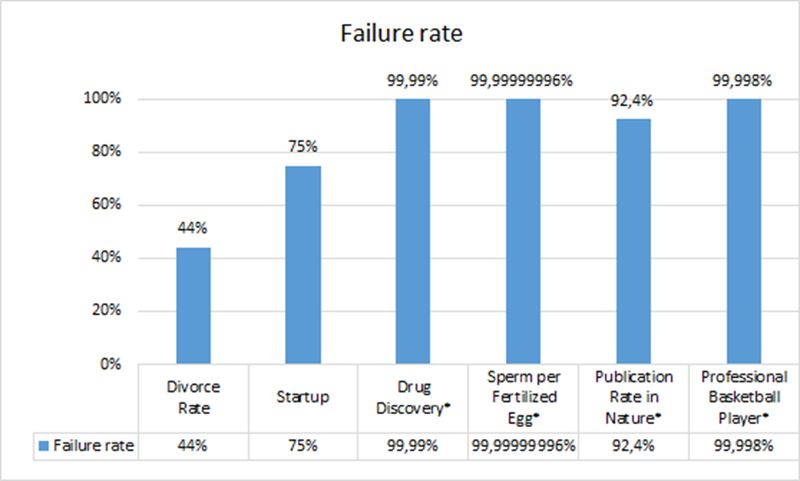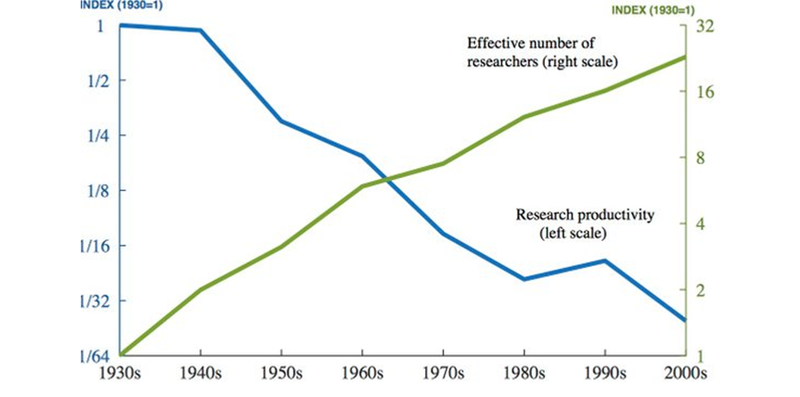Oops!
Tuesday, 07 May 2019By R. James Breiding

Johannes Haushofer of Princeton, who studied at the University of Zurich, bravely published his resume, listing degree programs he did not get into, failed funding applications, companies and girlfriends who rejected him and other mishaps. Reactions here and abroad ranged from amusement to astonishment. It seems we’re so accustomed to flattering versions of achievement that the thought of advertising failure and treating it so unsentimentally is shocking.
Janan Ganesh, a political commentator for the Financial Times, wrote a fascinating article about the value of being more honest about failure. Much of the first section of this essay is attributed to his work. Ganesh describes failure — not spectacular failure, but failure as relentless and inevitable disappointment — as the natural order of life. In almost all professions, there are too few places at the top for too many hopefuls. Lots of blameless people miss out. Of course, there is the occasional wrong turn — a duff career move, say, or a bout of bad health. But in most cases, it is just the law of numbers doing its impersonal work.
Most of us will achieve at least a little bit less than we would have liked in our careers. Most marriages wind down from intense passion to a kind of elevated friendship, and this does not include the roughly four in 10 that collapse entirely. Most start-ups fail. Most books fail. Most films fail. And each year, when January comes around, we set ourselves up to fail by making a handful of unrealistic new year’s resolutions. It is now May and if you have managed to keep your resolution, you are among the 8% (according to a study by the American clinical psychologist Joseph Luciani). Charles Weissmann, the first to synthesize interferon and a cofounder of Biogen, told me that “scientists spend most of their lives proving themselves wrong’’.
You would hope that something so endemic to the human experience would be constantly discussed and thoroughly prepared for. Instead, reactions tend to bifurcate roughly around two groups: glorification or denial. In growing parts of the world, people are indoctrinated to treat failure for its utility as a great “teacher” or as a stopover before eventual success. The book shelves are stuffed with self-help books exhibiting junk food-like appeal such as Failing Forward: Turning Mistakes Into Stepping Stones for Success. Consult an anthology of quotations about the subject, and it is not just the Paulo Coelho types who sugar-coat it. Churchill, Edison, and Einstein: people who should know better almost deny the existence of failure as anything other than a character-building phase.
Facts on Failure

Then there is the danger arising from ‘winner’s wisdom’: those who overcome setbacks to achieve epic feats, and then universalise their atypical experience. History instructs us that progress is as much about the ‘moment’ as it is about the ‘man’ – if not more. The most impactful events in history are, by their nature, the least predictable (i.e. “Black Swan” events) starting at the genetic level (mutations) and persisting across the vast continuum of life (Trump). Amazingly bad givers of advice, they encourage people to proceed with ambitions that are best sat on. They despise “quitters” when quitting may be the most prudent choice.
There are good intentions behind all of this. There is also a lot of naivety and euphemism. For many people, failure will be just that, not a nourishing experience or a bridge to something else. It will be a lasting condition, and it will sting a fair bit. Our seeming inability to look this fact in the eye is not just unbecoming in and of itself, it also inadvertently makes the experience of failure more harrowing than it needs to be. By reimagining it as just a halfway house before ultimate triumph, those who find themselves stuck there must feel like aberrations, when their experience could not be more banal.
Whether at school or through those excruciating management guides, a wiser culture would not overly romanticise failure as a means to success. Perhaps we should establish quotas or personal budgets as an alternative. Professor Ralph Eichler, the former president of the ETH, (and a physicist) told me, “You should fail 25% of the time: if it’s much more than this level, it’s too discouraging; and if it’s much less than this, then you are not trying enough new things’’ (allotments may vary by decimal places for molecular biologists or aspiring actresses).
The Swiss reaction to failure tends to be more subversive – deny it! I recall a member of the Geigy family (owners of the forerunner to Novartis) telling me, “Of course we had patients who died during clinical trials, but we never talked about it’’.
Basel, the home of Switzerland’s coveted pharmaceutical industry, is renowned for its discretion. The joke goes that the only number in Roche’s annual report until 2000 was the year. Yet every person holding a smart phone and a Facebook or Twitter account is a potential journalist. 3.5 billion curious and attentive users mean that burying or hiding mistakes rarely remains a viable option, even in Basel.
Every innovation is by definition unknown and must be discovered as a result of trial and error. Failure is thus inevitable. In this sense, the comforting self-help books are spot on. With vastly larger pools of overeducated people chasing fewer opportunities for discovery, a kind of diminishing returns has set in. This would suggest that a greater degree of shamelessness and resilience will become more important attributes of success going forward. Neither are subject to traditional testing or evaluation methods. Nor is this an especially pleasant combination of traits in the collective.
More Finding Less

From: “Are Ideas Getting Harder to Find?” by economists Nicholas Bloom, Charles Jones, John Van Reenen and Michael Webb. Credit: Charles I. Jones.
Rather than asking ourselves “What do we want out of life?”, the more relevant question may be “What pain are we willing to suffer?’’. The answer will most likely be a greater determinant of how our lives turn out.
People want to start their own business and strike it rich, but being a successful entrepreneur requires taking lots of risks. You may suffer repeated failures, have unreliable and inadequate funding, and work insane hours on something you have no idea whether it will succeed.Patrick Collison, the co-founder of Stripe and one of the wealthiest persons under 30 in the world, said that he has to put up with an attenuated state of being both extremely optimistic (to overcome hardship and uncertainty) and pessimistically paranoid (due to vulnerability). “Neither state feels good, and together it often feels like being pummeled against the ropes like a boxer’’.
What defines and separates us are not the good feelings we desire, but the struggle we’re willing to sustain to get to that point. "Sisu" is a two syllable national anthem in the Finnish language that roughly translates into courage and resoluteness in the face of adversity, typically in situations where success is against the odds. It means deciding on a course of action and then sticking to that decision despite repeated failures.
Finland recently topped the ranking of the world’s happiest countries for the second year in a row. Happiness is a fuzzy metric, but my sense is that there may be some correlation with Sisu.
Winston Churchill

“Success is stumbling from failure to failure with no loss of enthusiasm”
Prof. Dr. R. James Breiding is the Founder of Naissance Capital, a Swiss investment boutique that finds investment opportunities for UHNW clients. Breiding is also the author of Swiss Made — The Untold Story behind Switzerland’s Success, which chronicles Switzerland’s most successful innovations and explains how it has become the most competitive nation in the world. He has lectured at Beijing University and Princeton University and is currently a lecturer and fellow at Harvard’s Center for International Development and Collegium Helveticum.